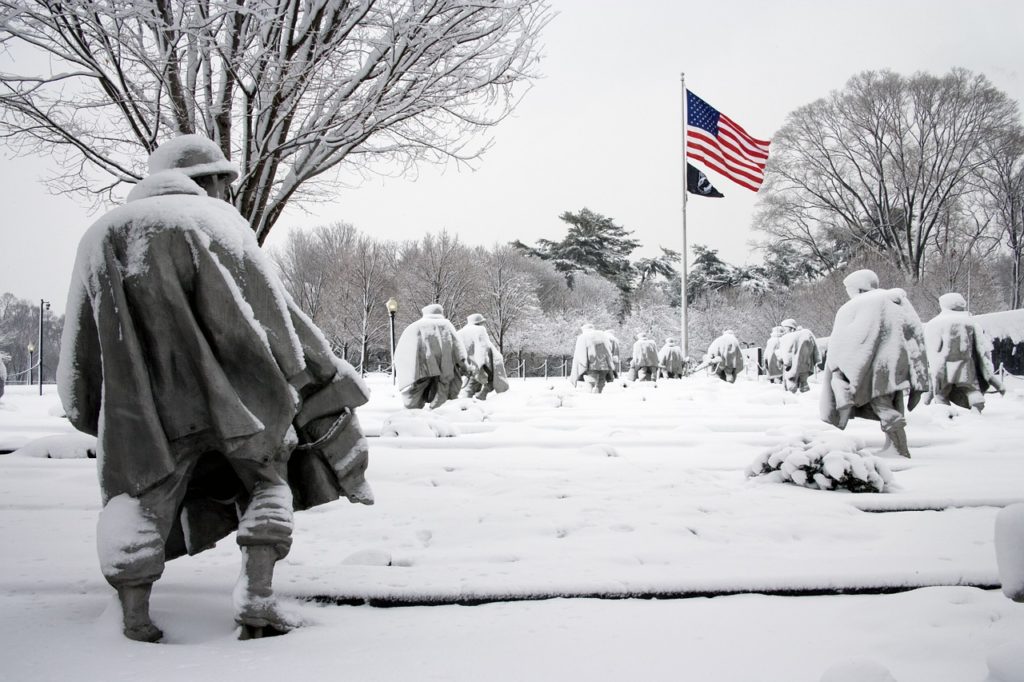One of the main characteristics of the Cold War between the United States and the Soviet Union was the fact that it was a war without any direct physical conflict. It was called a “war,” but there were no confrontations between the armies of the two superpower countries. The Cold War was represented in the races the two countries entered against each other in both arms and space.
On multiple occasions, this conflict did actually result in armed confrontations of war in its traditional form. Although those wars were not directly fought between the United States and the Soviet Union, both countries had great impacts on the fighting sides of each of these wars. The Korean War is a perfect example of these wars that was called “wars by proxy.”

The Northern and Southern halves of Korea
Before Japan lost World War II as a part of the Axis powers, Korea was a part of the Japanese land. After World War II ended and Japan was defeated, the Korean Peninsula was divided just like Germany between the superpowers that had just won the war. Unlike the division of Germany, Korea was divided between just the U.S. and the Soviet Union. The Southern half was the part that the U.S. controlled, while the Soviet Union got the Northern half of the Peninsula. The two sides were divided at the 38th parallel.
As the two separate countries started to form, two governments were formed to rule their half of Korea. North Korea, of course, had a communist government due to the inherited effect of the Soviet Union control. South Korea had a democrat capitalist government.
The Korean conflict leading to war
As expected, the two states did not have a peaceful or harmonious existence with each other. The border between North and South Korea was often a place for battle and all attempts to have the two states become one united country failed miserably.
North Korea decided to take a more aggressive step towards uniting the two halves of Korea when the North Korean army invaded South Korea in June of 1950. The South Korean army was defeated and had to flee the battle which forced the United States to interfere and send forces through the United Nations to help South Korea.
Despite the additional forces provided by the United States, the North Korean army occupied most of South Korea leaving the Southern government trapped in a very small part in the southern tip of the country.
The first war by proxy
Up until this point of the war, the United States was only defending South Korea from the invasion through its UN forces. After the attacks from North Korea seemed to be nonstop, the U.S. President at the time, President Truman, decided to start attacking. It was now, as he said, a war to free not only the Southern part of Korea from the Northern attacks but to free North Korea itself from the communists’ control.
The UN forces, led by General George MacArthur, started attacking North Korean forces in the Battle of Inchon. As a result, South Korea was able to retake its capital, Seoul, as well as the rest of South Korean lands up to the 38th parallel.
The UN forces, led by the majority of American forces, were able to keep pushing the communist army of North Korea further to the North. At this point, another Communist force decided to enter the war – China.
With a new leadership of the UN forces, the border between South and North Korea, the 38th Parallel, was secured and well defended. Finally, by the time China joined the Korean War, all battles took place at this border.
The Korean War comes to an end
After three years of the North Korean invasion of South Korea, in July 1953, a new administration came to the Oval Office with the leadership of President Eisenhower. As a result of new leadership, Eisenhower was more willing to make compromises to end the war. Both sides of Korea agreed to sign a treaty to end the war with the condition that the 38th parallel would be a 2-mile demilitarized zone and act as a border to prevent future war.
Back to Cold War topics
